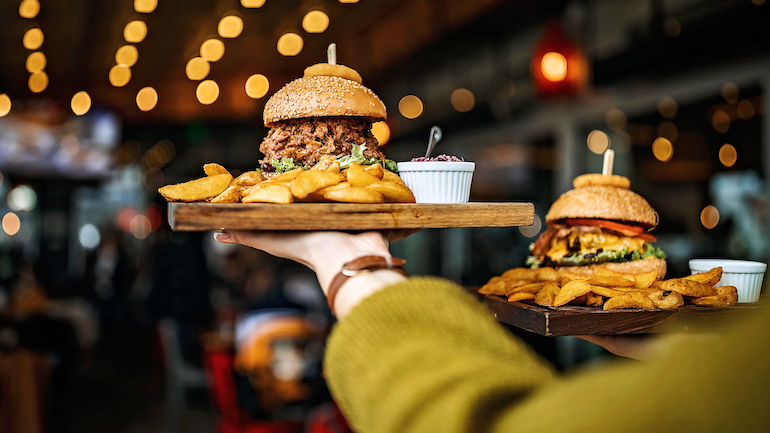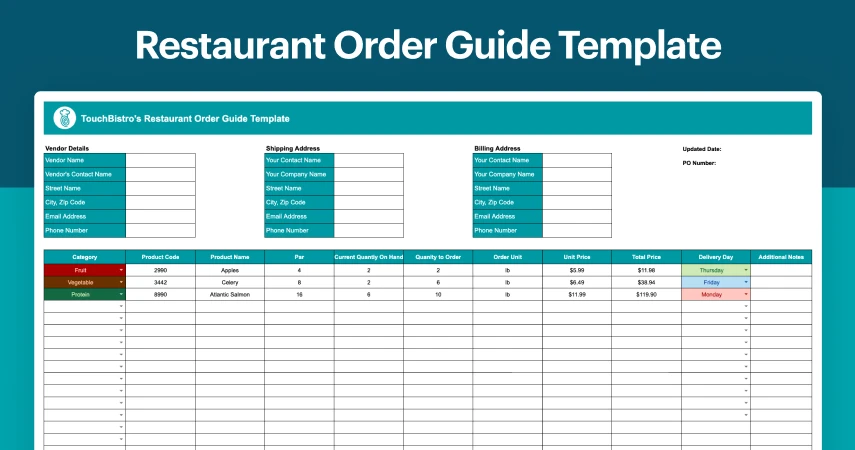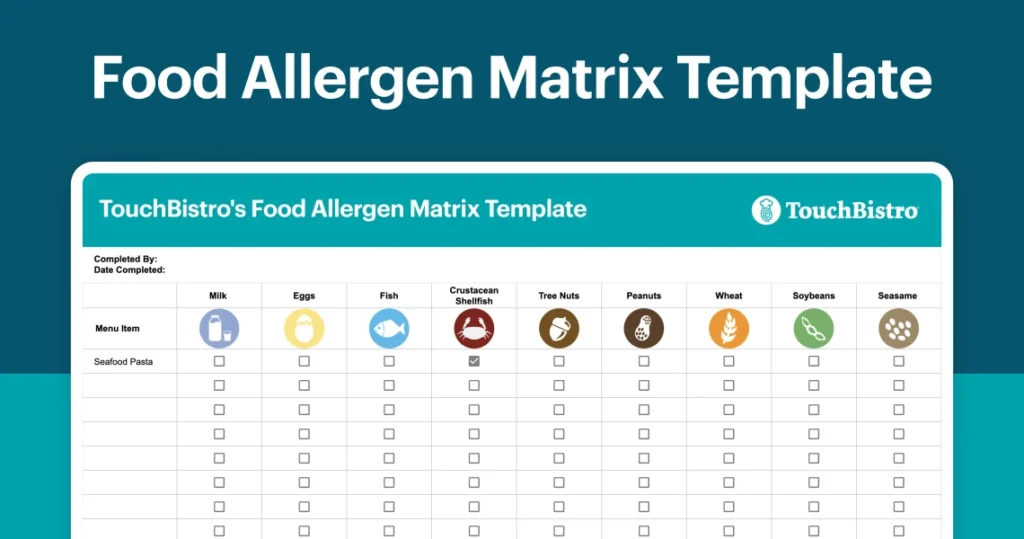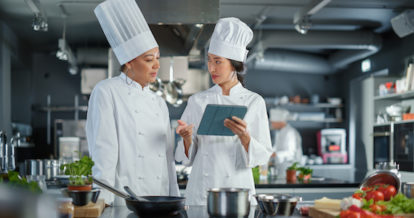Whether you’re new to the restaurant industry or a seasoned veteran, you know that it’s essential to understand your food costs so that you can price your menu appropriately and keep margins healthy. And part of understanding your food costs includes knowing how to cost out a recipe.
Recipe costing is the act of breaking down each item on your menu item into its individual ingredients and determining what each of those ingredients costs. And while this might sound complicated, it’s actually much easier than creating a business plan, hiring the right chef for your restaurant, calculating your bar inventory, or updating your profit and loss statement.
In this article on how to cost out a recipe, we’ll explain:
- The importance of recipe costing
- How to figure out the cost of a recipe
- A recipe costing formula you can use for any of your menu items
- How to use recipe costing to set the right menu price

What is Recipe Costing?
Recipe costing (also called plate costing) is the process of figuring out the cost per serving of each item on your menu based on the cost of the individual ingredients. This involves listing all the ingredients required to make a dish and working out the amount that goes into each serving.
While this may sound straightforward, recipe costing can become a bit complicated because most food items are sold by the container or by the pound. To account for this variable you’ll need to take a percentage of those ingredients per serving (such as half a can of tomatoes, or one apple from a bag of eight).
Though costing a recipe may take a bit of time, it’s worth the extra effort because it enables you to set a profit margin that works for your restaurant or catering business. By keeping a record of your costs, you’ll notice when supplier prices are increasing and when it might be time to tweak the recipe or remove a dish from your menu. Calculating your food cost percentage is also a crucial part of this process, and you can do this using our free food cost calculator.
The Importance of Recipe Costing
Here’s the thing: the cost of the ingredients that make a recipe amount to, on average, one-third of the price of the recipe on a menu. So, if a customer orders a lasagne for $12, four of those dollars go straight into paying for the ingredients, and the other eight have to cover business expenses such as staff wages, rent, and more.
A small decrease in the cost of your ingredients (or increase, for that matter) can massively alter your profit margins. This can make you think twice before opting for the fancy imported French cheese instead of the local squeaky cheese curds.
Being aware of the cost of your recipe can also help you make more informed business decisions about what suppliers you work with and how much you order.

Use this free Excel spreadsheet to simplify the ordering process and improve inventory control.
How to Cost Out a Recipe Using a Recipe Costing Formula
Though it sounds complicated, knowing how to cost out a recipe is surprisingly simple. You just need to start with the following steps:
List the Ingredients in Each Recipe
First, you should list out all of the ingredients involved in creating the recipe you wish to cost out. In this case, let’s use the example of a burger.
Then, list out the cost of every ingredient in the format it came in. For example, if you bought a jar of pickles for $3, that’s the number you list, even if your recipe only uses one pickle.
List the Price of Each Ingredient
Next to the price of each ingredient, put down the number of servings per jar, or the number of pounds you have of that ingredient. For example, you might have 10 pickles in the jar, so you would put the number 10 down. If you need two pounds of beef, put down the number two next to the price of the beef.
Calculate the Price Per Item
After that, you calculate the price per item (e.g. price per pickle) and price per pound (e.g. price of one pound of beef) by dividing the price of the packet by the number of units.
So, if a jar of 10 pickles costs $3, each pickle costs 30 cents (3 / 10 = 0.3). And if two pounds of beef costs $10, it’s $5 per pound (10 / 2 = 5).
Plug Costs Into Your Recipe Costing Formula
Then, multiply the price per item by the number of items in your recipe, and the price per pound by the number of pounds in your recipe. Your recipe calls for half a pickle per burger at 30 cents per pickle, so each half will cost 15 cents (30 / 2 = 15). And if you use 0.25 pounds of beef per burger at $5 per pound, it will cost $1.25 (5 x 0.25 = 1.25).
Finally, add all of that up, and you have your recipe cost!
Here’s a spreadsheet showing you an example to give you a visual of costing a recipe:

In the second column, instead of “Price per pack”, you could insert the “Average cost per pack”, which will then mean you get the “Average price per item/unit”, and your final figure will be the “Average total price per burger”.

Download this customizable template for you and your staff to use to protect the health and safety of your guests with food allergies.
How to Use Recipe Costing to Set Menu Prices
Now that you know how to cost out a recipe, you need to know how to use that information to set your menu prices.
The menu price should be dictated by a few key things. First and foremost, you need to ensure you’re covering the cost of other essential business expenses, such as rent, utilities, and payroll. This menu price should also be dictated by your desired profit margin.
Your staff costs and rent and utility costs will generally be fixed and difficult to change, but there are ways to reduce the amount you spend on ingredients so you can reduce the cost of a given recipe. You can opt for cheaper ingredients if you want to increase your profit margin, but bear in mind that the perceived quality of the food may be negatively affected, which may in turn impact how your customers feel about your food and service.
You can also raise your menu prices to offset higher recipe costs, but just be careful not to spring it suddenly on your customers, or inflate the price too dramatically overnight. It’s normal for prices to go up as inflation occurs and everything else becomes more expensive, but staggering your price increases is necessary to help ensure your customers don’t walk away with sticker shock.
Ultimately, your best course of action is to aim for your recipe cost to be closer to 28% than to 35% of the total menu price because that can help absorb any unexpected price hikes or surprise restaurant maintenance challenges. Not to mention, when food costs fluctuate, you’ll be better equipped to absorb those changes, even if it means a smaller profit margin for a period of time.
Recipe Costing Example
Going back to our burger example, here’s how you would calculate the price that you should charge the customer for the burger. Ideally, the recipe cost should be about a third of the menu price, or 28% to 35% of the overall price.
The higher the percentage, the lower your profit margin. If $2.41 is 28% of the price on the menu, then the price on the menu is 2.41 divided by 28, times 100, which equals $8.61. If $2.41 is 35% of the menu price, then the menu price is 2.41 divided by 35, times 100, which equals $6.89.

Recipe Costing for Catering
Knowing how to cost out a recipe is essential for menu pricing, but it’s also incredibly valuable if you offer catering services. If this is part of your restaurant’s business model, it’s a good idea to create a spreadsheet with all of the ingredients you use, along with the prices of those ingredients from different vendors and at different times of the year. This will help you keep track of price fluctuations and calculate the average price per ingredient over time. In turn, you can use this information to better plan for the following year.
This catering proposal sample can help you flesh out your recipe costing so that you can accurately predict how much you should charge those who hire you for off-premise events. You don’t want to use the minimum possible cost to figure out your menu prices, because when they inevitably fluctuate upwards, and it will eat into your profits. To stay safe, price each item based on the average cost of those ingredients.

Make your catering business a reality with this customizable catering business plan template.
Recipe Costing: The Bottom Line
While crafting a new recipe can be a fun and creative process, it’s important to forget that knowing the cost of that recipe is just as important as how it tastes. By learning how to figure out the cost of a recipe, you can ensure that even your most daring and innovative recipes are still leaving your restaurant with healthy profits at the end of the day.
Download our free inventory template
Sign up for our free weekly TouchBistro Newsletter







